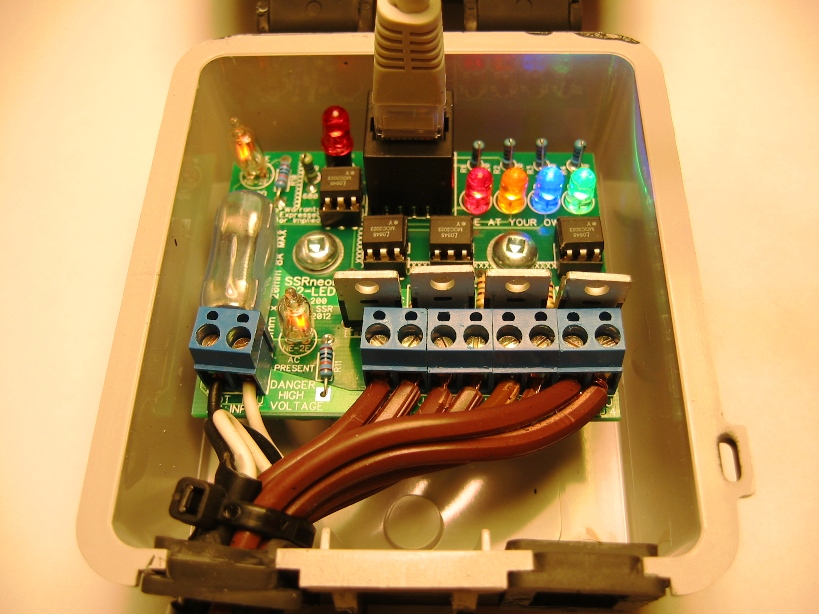ESPixel Stick & ESPixel Pops
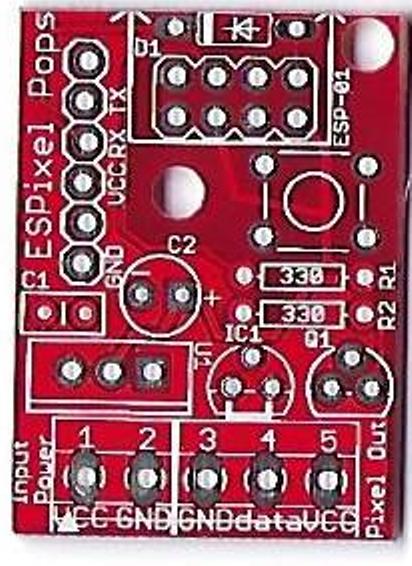
This page is under construction
The ESPixel Pops is a variation of the original ESPixel Stick by Bill Porter
The genesis of the pixel stick controllers started with designes by Bill Porter.
You can read about this at Bills website found at: The mind of Bill Porter
The ESPixel Pops is the most basic of the Pixel Stick designs. It is a fully through hole PCB with no smd(surface mount) components. Therefore, it is easily built by most anyone with basic soldering skills.
This variation was created by Pops Jones (ukewarrior) in order to create a form factor that would fit inside a 1" thin wall PVC tube.
From a software perspective, it is an E1.31 sACN (Streaming ACN) pixel controller that connects over a standard (802.11g/n) WiFi network. The firmware is open source and developed in the ESP8266 Arduino environment. It provides a web based configuration front-end and currently supports WS2811 / WS2812 pixels. (3-wire pixels)
General Features
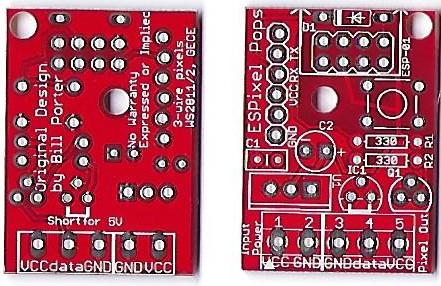
The Pixel Pops has these main features
1. It supports 3 wire pixels such as those based on 2811, 2812 and GECE chipsets
2. It runs as a wireless E 1.31 datastream from your main controller (aka show computer)
3. It utilizes the ESP-01 module for processing and wireless operation
4. The board is small enough to fit inside a 1" thinwall PCB pipe with the board measuring only 24.18x33.32 mm
The board professionally manufactured with 1oz copper and the holes are through plated. This makes for easy and more error free soldering.
All wires attach via terminal blocks. However, the use of terminal block is optional as the holes support direct soldering of wires.
The Schematic can be downloaded by clicking on this link:
Media:ESPixel_PopsSchematic.pdf
.
Order your own boards
You can order your own boards with the information given below, or you can contact: ukewarrior on the DIYC forum to see if he has any in stock.
The PCB industry has a standard for the definition of a PCB. It's called a 'gerber' file. This is a set of files that have the actual instructions that tell the machines how to operate.
The Gerbers for the ESPixel Pops are found at this link: (link below is incorrect, file to be posted) Zip File containing the SSRneon-G2-LED Gerber files
This is all your should need to order PCBs from any PCB manufacturer.
Fuses
There is no onboard fuse for the ESPixel Pops.
Since there is no onboard fuse, if a power overload should occur, the ESP-01 or the ESPixel Pops board may be damaged. You can add an inline fuse if desired with the input power feed.
Disclaimers
USE the ESPixel Pops board at Your Own Risk !
The ESPixel Pops board has NO warranty expressed or implied
BOM - Bill of Materials
The following BOM assumes that the four channel indicator LEDs are RED LEDs. If you want to use other colors for the indicators, see the section after the BOM for a discussion on how to use other colors.
Construction Information
There are several 'how to build a PCB' self help guides both within this wiki and the web.
Here is a picture of a completed ESPixel Pops: (The fuse cover has been removed)
Updated picture to be added....
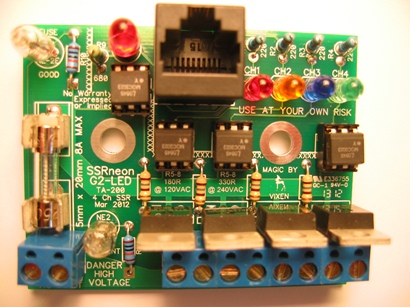
Wiring The ESPixel Pops
The pin-out for the RJ-45 network cable is the same for all of the Sean Bowf derivative SSRs:
View looking down on the component side of the PCB:
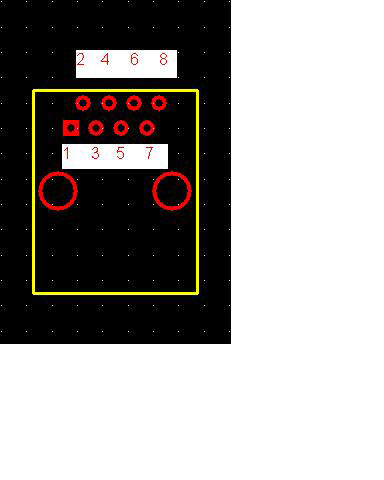 |
Controller Output Pinout
|
The following image shows how to connect wires to the SSRneon-G2-LED.
The AC line connects to the far left hand terminal block labeled: AC INPUT
The other four terminal blocks are for the wires that will connect to your lights. The connector labeled: HOT is for the 'hot' wire. The connector labeled: NEU is for the 'neutral' wire.
Your network interface cable clicks into the RJ45 connector on the top right of the board. If all is well, you should see both neon bulbs glowing signaling AC voltage is present and flowing through the fuse. The LED should also be lit to indicate that 5 volts DC is being supplied by the lighting controller.
